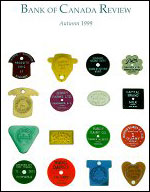November 16, 1999
The Corporate Bond Market in Canada
The Canadian corporate bond market has experienced a renaissance, in recent years, against a background of low inflation, reduced public borrowing, and the lowest levels of long-term interest rates in a generation. The authors examine the influences shaping the market and also compare the Canadian market with those of other countries.
The increased level of activity in the market has been accompanied by the development of new products and by greater investor interest in instruments with higher returns and higher credit risk. A more dynamic Canadian corporate bond market is a welcome development since it offers borrowers an alternative source of funds, especially companies that have typically relied on the banking system and on the U.S. corporate bond market for financings involving higher levels of credit risk.
